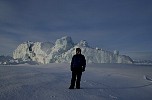
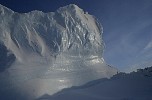
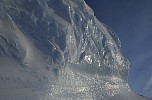


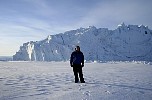
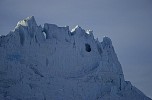
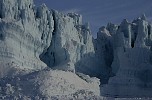
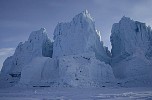


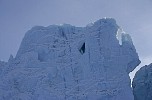
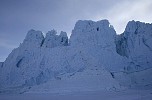
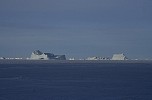
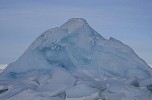
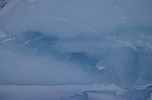


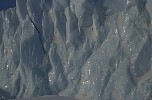

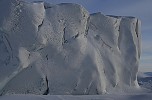


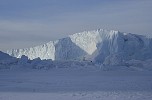


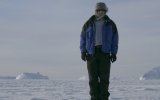
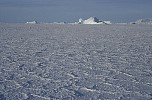
Next day the weather was perfect.
Since I got my luggage back, I also had my liner gloves, so I could take the camera and take some pictures without having to warm up my fingers for five minutes afterwards. And I had warm headgear that actually fitted. And my non-digital camera. And a tripod.
So it was time to head out to the icebergs and take lots of pictures.
When I was the first day in Qaanaaq, I headed for the smaller icebergs closer to the coast, but this time I aimed for a big iceberg about six kilometers off the coast, which I had seen the previous day from the dog sledge and looked a bit like a fantasy castle - a bit like Gormenghast, rendered in white. Lots of towers, turrets, spires, openings, arches and strange tunnels.
Here are, without further commentary (because there would be little to say but "and here's another iceberg I've walked by"), some pictures from the icebergs south-west of Qaanaaq.
Since I got a tripod with me, I also played around a bit with HDR pictures.
HDR images are currently 'trendy'. In about three years, these will look as dated as fractal patterns, morphing images and animated gifs, but right now it's fun to play around with them. Essentially, you take a couple of pictures with different exposures and then some software picks up the parts with the most contrast from each image and combines them. Which is not quite what the software actually does and it's also not quite how HDR is really defined, but as a rough explanation, it suffices.
HDR works well with high contrast scenes. If you expose correctly for the bright parts, the darker part will just be a dark splodge, if you expose correctly for the dark parts, the white areas will be washed out. But if you take pictures with all kinds of exposures, you can pick out the 'correctly exposed areas' from each shot and combine them to a new picture. Which has lots of nice detail everywhere, but usually looks kind of fake or unreal. But sometimes interesting. And, to a certain extent, it looks like the scene you thought you saw. If you look at the scenery, you don't just stare at it, but the eye moves over it and the iris adapts. So if you look at a bright spot, you see the details and when you look at a darker spot, you still see the details. (And the human eye has a larger range of brightness than the camera anyway.) So sometimes an HDR picture looks the way you thought pictures of a scene would look before you started photographing...
To create HDR pictures, you need a tripod (to make sure the view is the same for all three pictures) and a camera that is able to bracket exposures automatically (so you don't have to fiddle around with the camera and change the view). Luckily I had both.
Icebergs are well suited for HDR photography, since they got such a large dynamic range, form very bright spots, where the sun is reflected to patches of almost black ice. While the next six pictures don't look very 'realistic', it was fun to create them.
After a long walk on the ice I returned to the hotel. In the evening, some clouds appeared. Not a good sign for the weather on the next day, but at least the clouds caused another nice sunset.
On Sunday it got a bit stormy, so I didn't get out much in the morning. But there was a wedding at the local church, where the bride and the groom were wearing traditional outfits, so I went over to the church (photographing a dog in the storm on the way) and took a picture.
In the afternoon the wind had abated and I walked around a bit in the hills behind Qaanaaq, which gave me a nice view of Herbert Island on the other side of Murchison Sound.
On the next day, it was time for the second dog sledge tour. This time mostly along Inglefield Fjord.